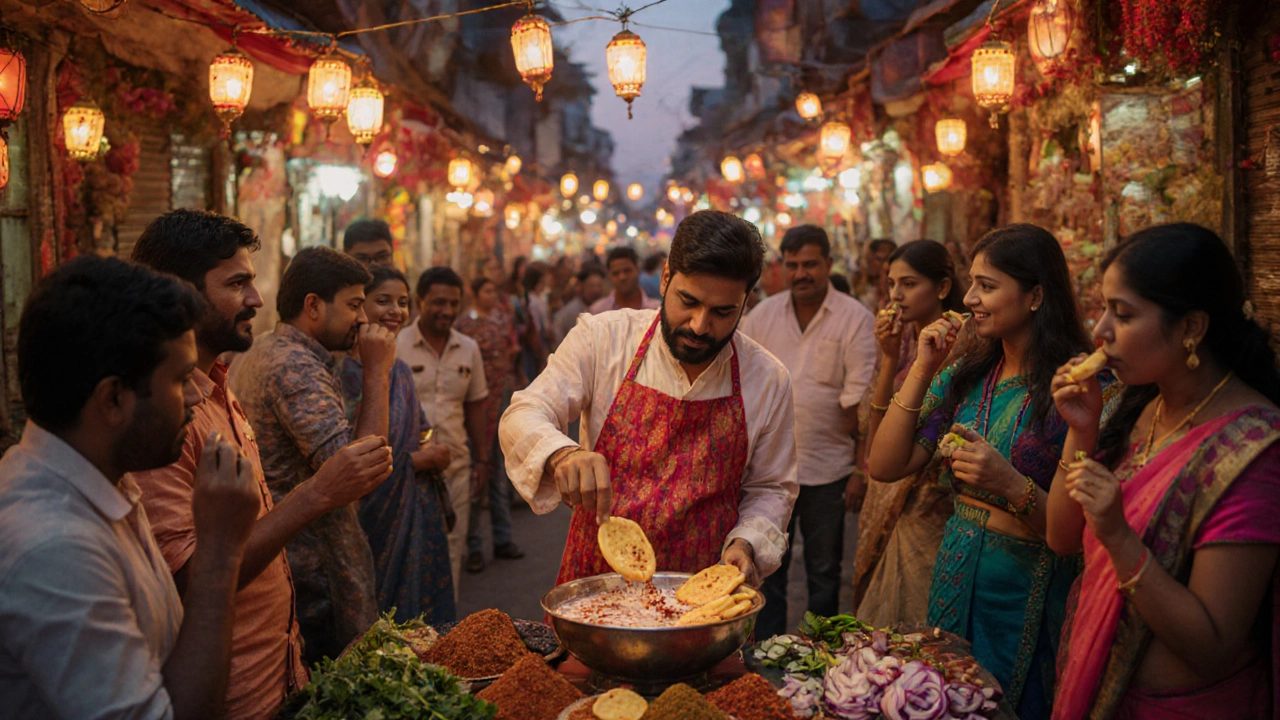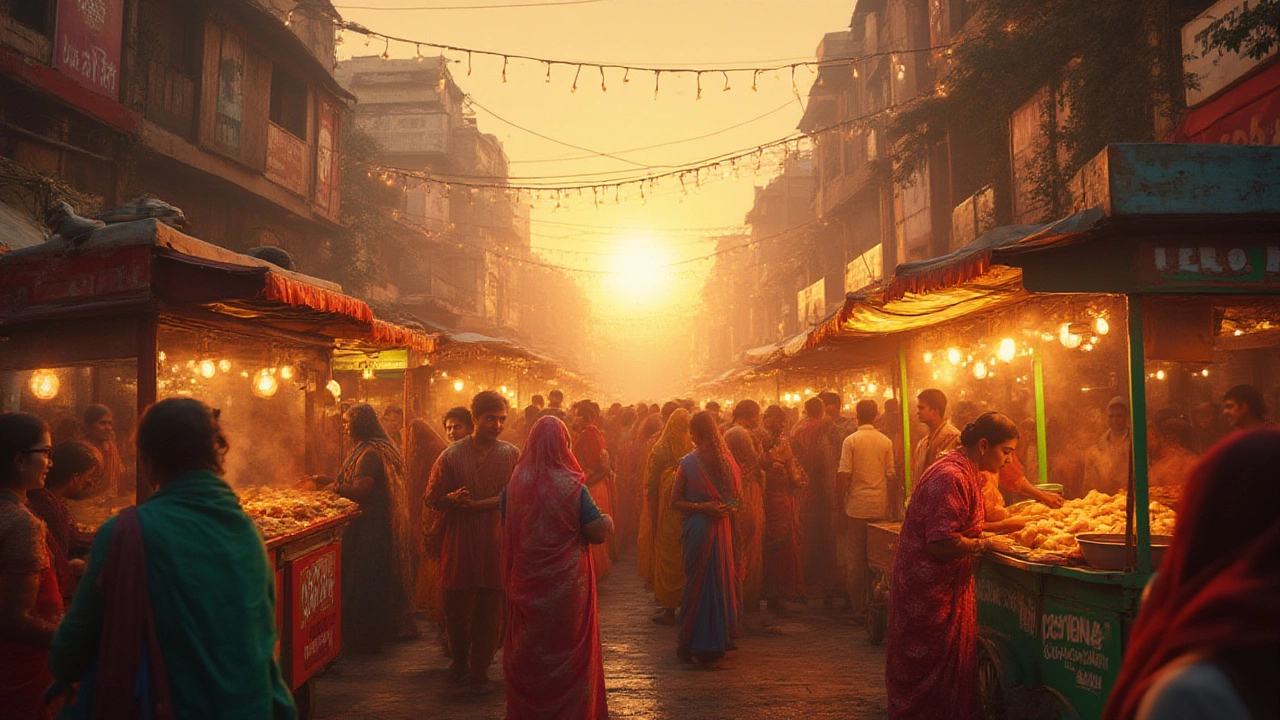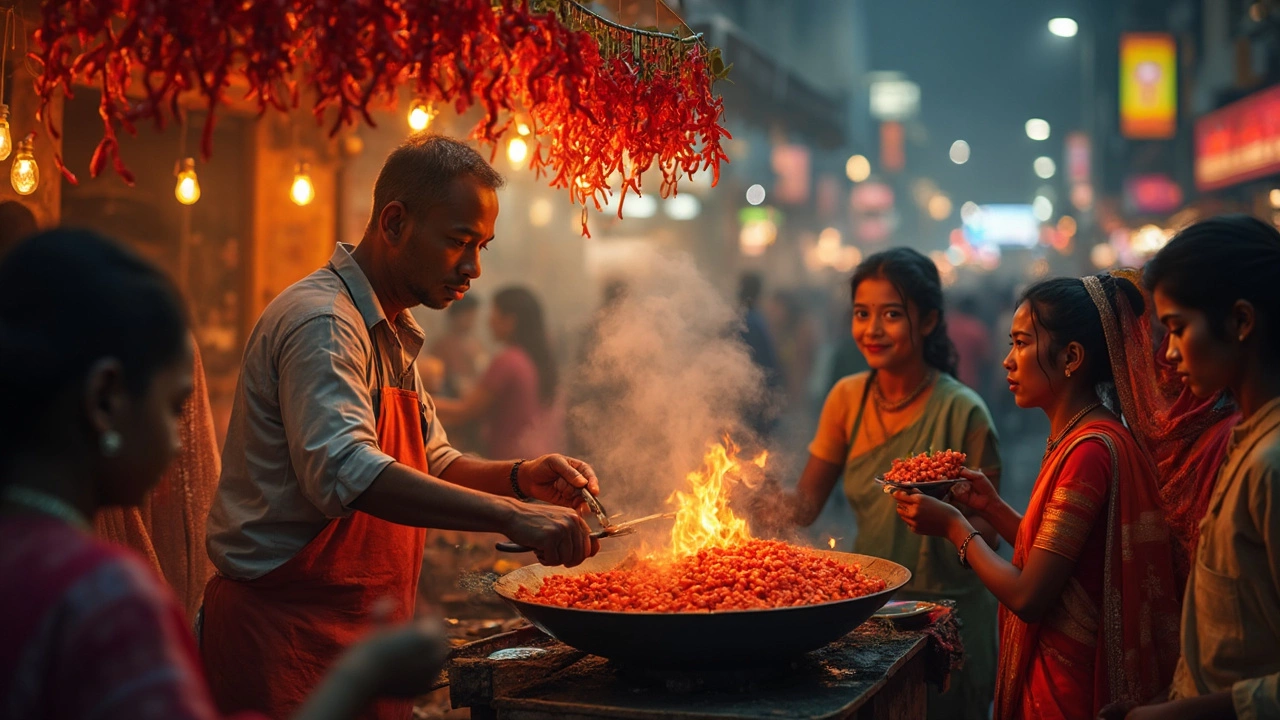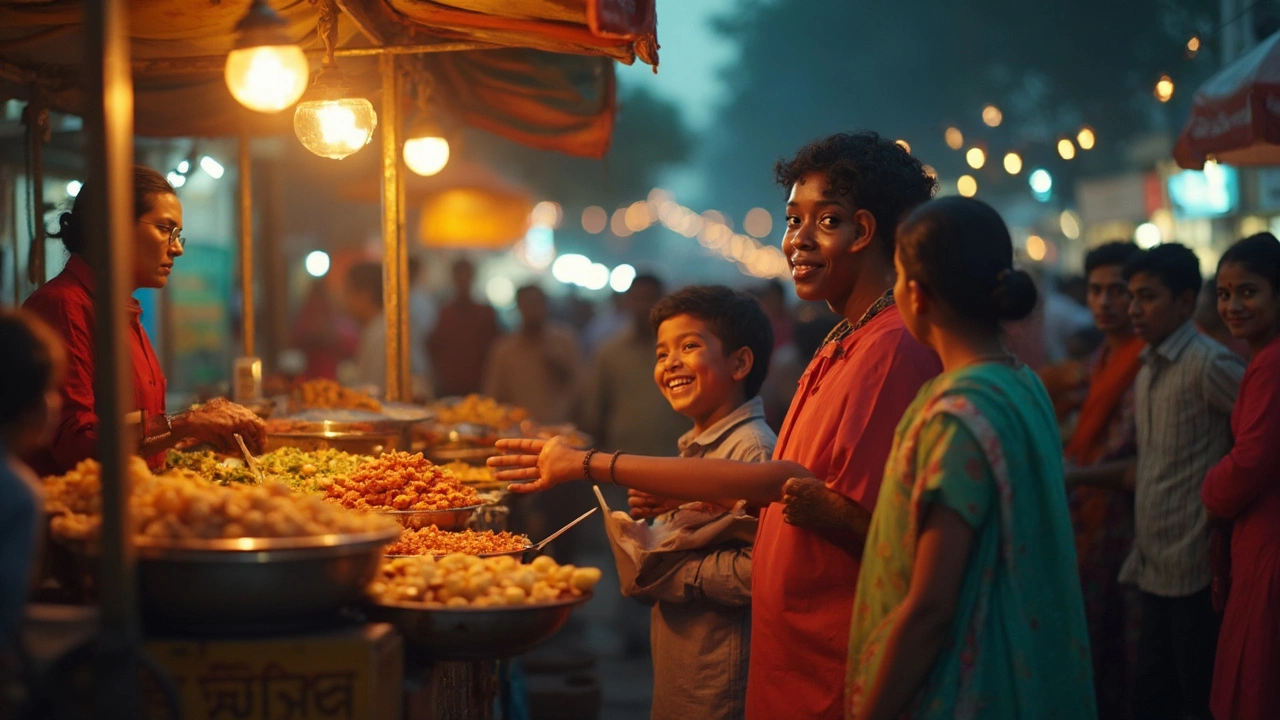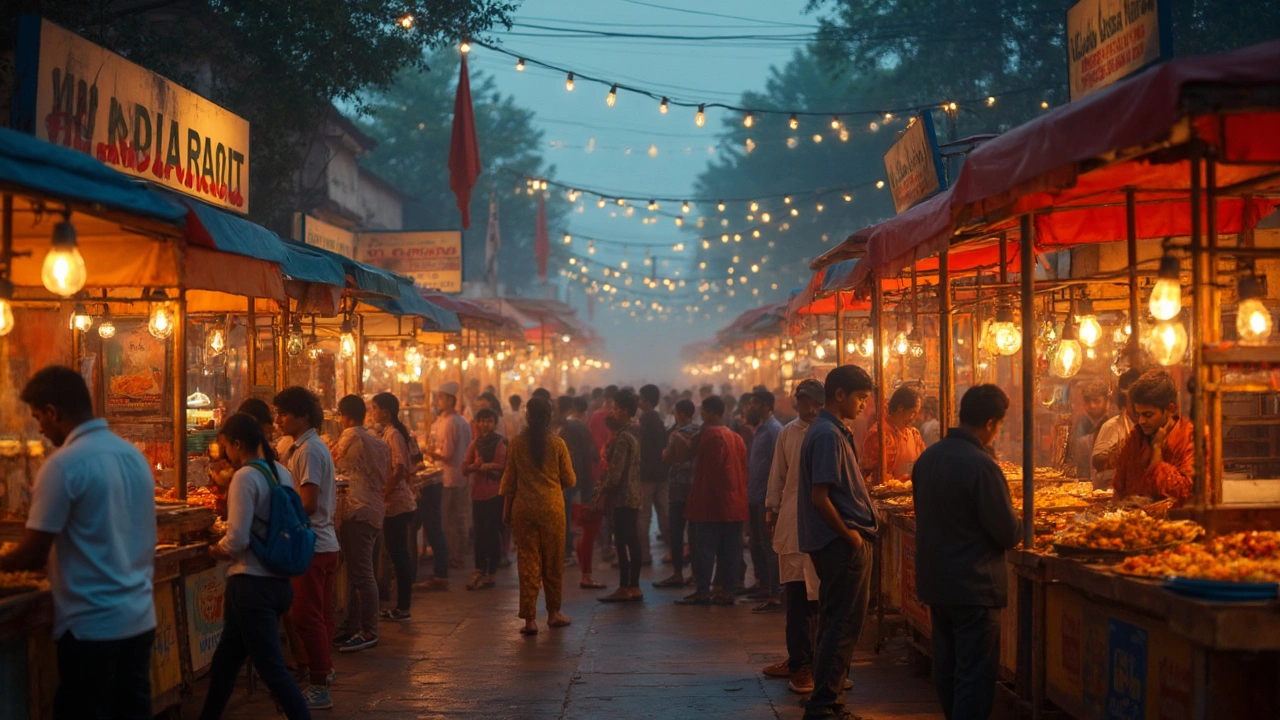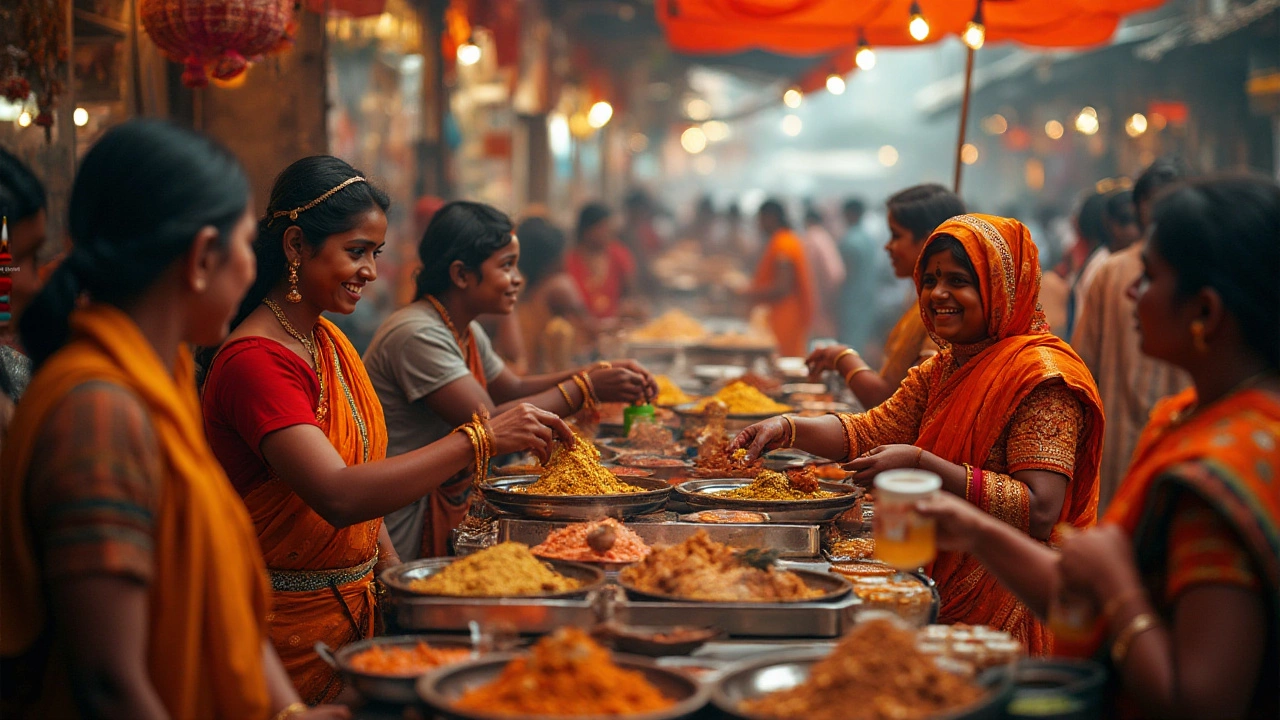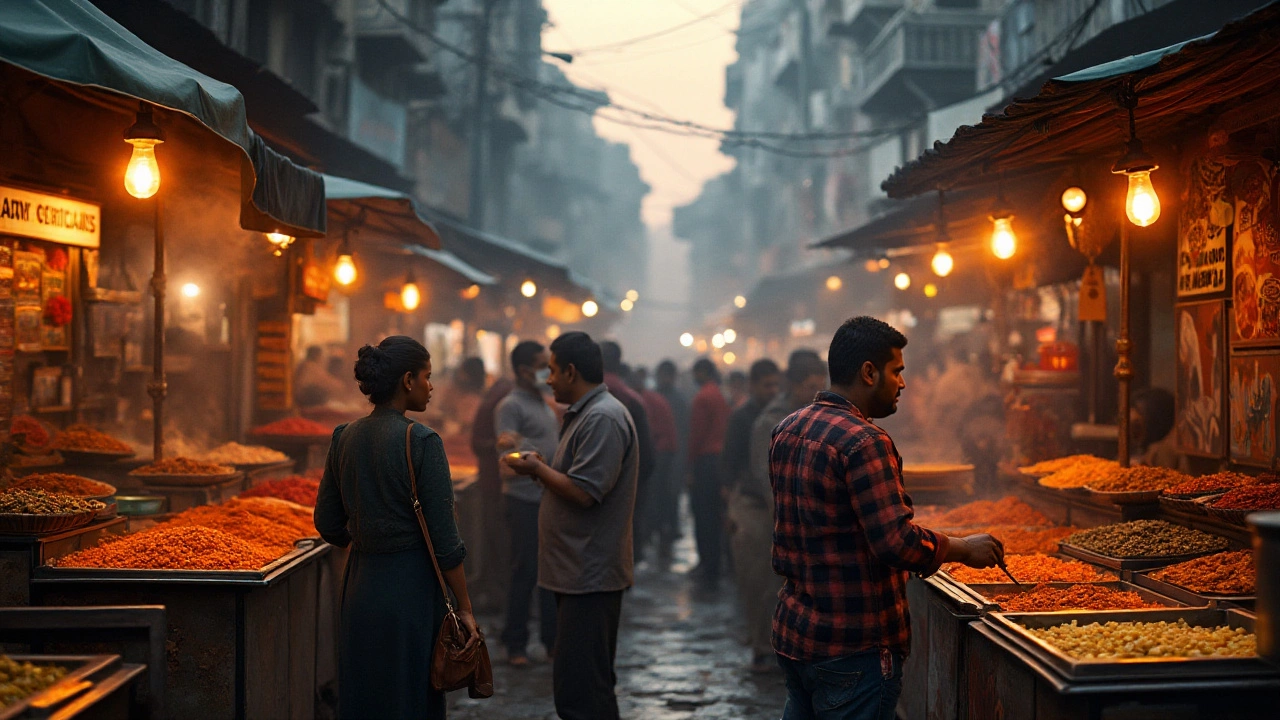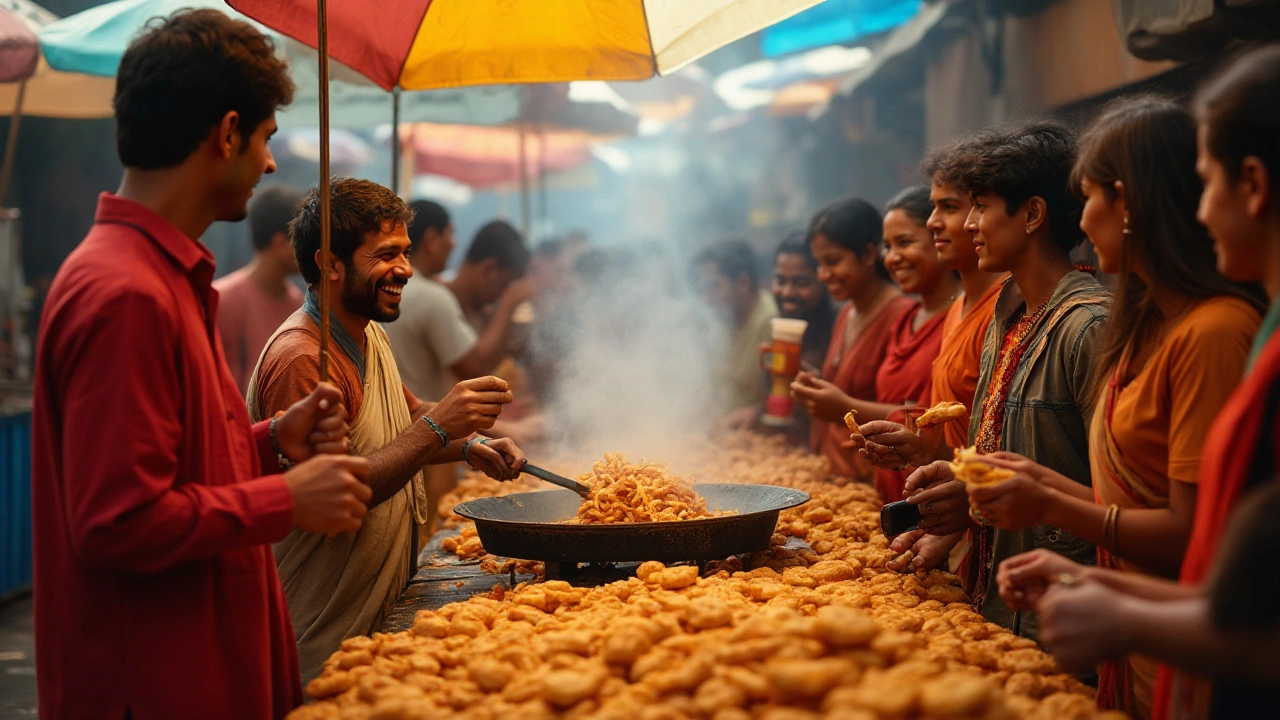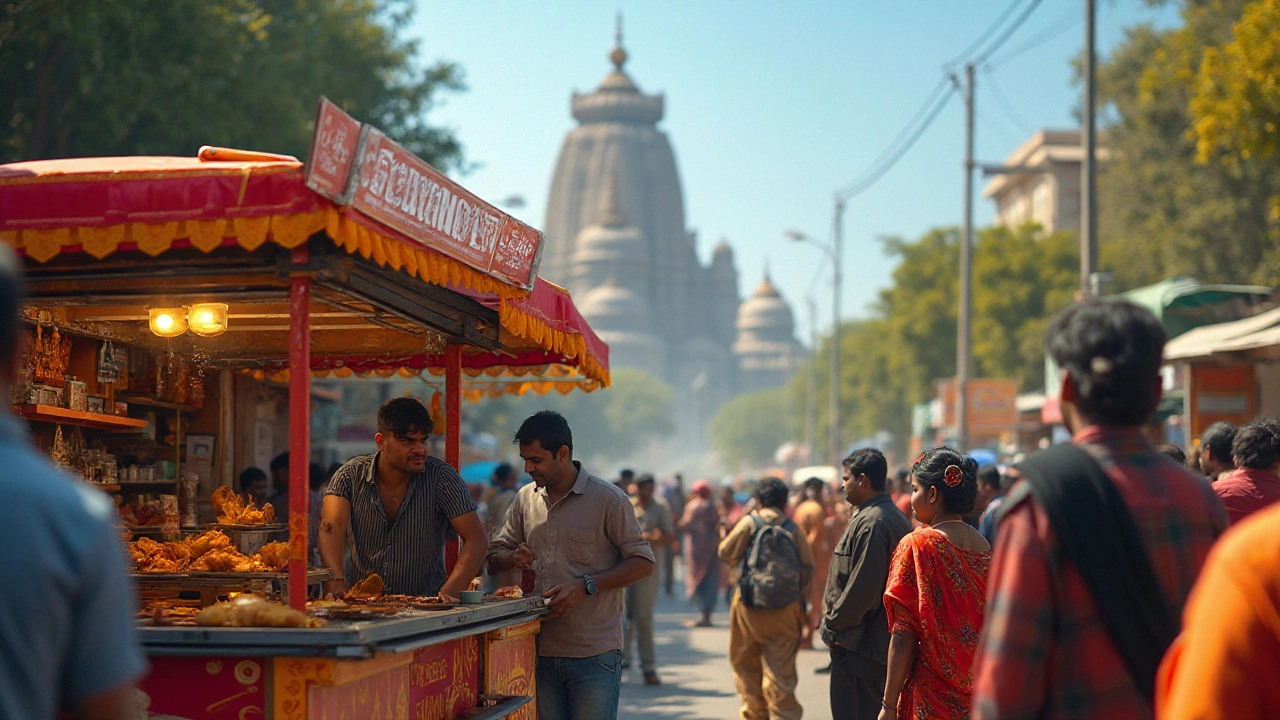Indian Street Food: Must‑Try Snacks, Spicy Showdowns & Safety Hacks
If you’ve ever walked past a bustling market in Delhi, Mumbai or Chennai, you know the smell of fresh‑fried snacks can be addictive. Indian street food isn’t just about filling your belly – it’s a splash of culture, a dash of history, and often a serious heat challenge. Below you’ll find quick pointers on what to eat, where to go, and how to enjoy it without getting sick.
What to Eat – The Crowd‑Fav Snacks
First up, the classics. Chaat mixes tangy tamarind sauce, crunchy papdi, and spiced potatoes – it’s the go‑to snack in almost every state. If you love fried dough, try pani puri (also called golgappa) – small hollow balls filled with spicy water, tamarind and potatoes. For those craving something sweet, jalebi offers a crisp, syrup‑soaked coil that melts in your mouth.
Feeling adventurous? Head to West Bengal for puchka, the local cousin of pani puri, or to Rajasthan for kachori, a deep‑fried pastry stuffed with lentils and hot spices. The most popular street food in India article in our collection breaks down which snacks dominate sales across the country, so you can pick the true bestseller wherever you are.
If you love the burn, don’t miss the spicy food showdown. One of our posts ranks the Indian states that live for chili heat – Kerala, Andhra Pradesh and Gujarat often top the list. Order a plate of mirchi bajji or a dollop of pani milan to test your limits.
How to Stay Safe – Street Food Tips for Travelers
Street stalls are delicious, but safety matters. Look for vendors with a steady crowd – a busy stall usually means fresh cooking and quick turnover. Check that the oil is clear and not overly dark; it’s a sign the fry‑master isn’t re‑using oil for days.
Carry hand sanitizer and wipe your hands before and after eating. If you’re worried about raw ingredients, choose items that are cooked in front of you – grilled corn, hot pakoras, and freshly boiled noodles are safer bets. Our "Is Indian Street Food Safe for Tourists?" guide gives a handy checklist to keep stomach troubles at bay.
And if you’re a meat lover, know the local rules. While beef is restricted in many states, chicken and mutton are widely available. Our article on "Is it Illegal to Eat Steak in India?" explains where you can actually find steak‑style dishes without breaking any laws.
Finally, remember that eating with your hands is totally normal here. Use the right hand, wash it well, and enjoy the tactile experience – it’s part of the fun.
From the best‑selling snacks to the spiciest regional challenges and practical safety advice, Indian street food offers something for every palate. Browse the articles below for deeper dives, and get ready to taste the streets of India like a local.
What Is India's Most Common Street Food? - Pani Puri Explained
Discover why Pani Puri (Golgappa/Phuchka) is India's most common street food, its regional twists, home recipe, and safety tips for enjoying it.
Most Popular Street Food in India: Best-Selling Snacks and Local Favorites
Curious about India’s top street foods? Discover which snack rules the streets, why it’s loved, how it’s made, with fun facts and tips from true local food stalls.
Which State Eats the Most Spicy Food in India? Street Food Showdown
Ever wondered which Indian state takes the crown for the spiciest eats? This article digs into India's spice obsession, focusing on street food that turns up the heat. You'll learn which region can't get enough of chilies, exactly what to order if you love spicy food, and even tips to handle the heat. We bust some myths about spice levels and share little-known facts that'll surprise even the most hardcore foodie. If you're chasing fiery flavors in India, this is your crash course.
Indian Slang for Okay: The Sweet Taste of 'Theek Hai' in Street Food Culture
What’s the go-to Indian slang for 'okay'? It’s 'theek hai'—and you’ll hear it everywhere, but nowhere is it served up quite like at a street food stall. This article decodes the real meaning behind this phrase, where it pops up in daily life, and how it adds flavor to street food experiences. If you want to sound local or navigate an Indian food market like a pro, these details matter. Come hungry for both lingo and snacks.
Is it Illegal to Eat Steak in India? Street Food Rules Unpacked
Curious if eating steak in India is against the law? This article breaks down the real facts about India’s steak and beef regulations. We’ll clear up what’s legal, what’s not, and why the rules change from state to state. Get tips for street food lovers and find out where you can actually try steak dishes. Navigate the local laws and taste the best of Indian street food without any trouble.
Rules of Indulgence: Navigating India’s Street Food Scene
Street food in India is an exhilarating culinary experience, offering a colorful array of flavors and textures. However, understanding the unwritten rules of eating in India can enhance this gastronomic journey. This article explores traditional dining customs, hygiene tips, and essential street food etiquette for any traveler. From how to choose a vendor to the art of eating with your hands, it delves into the essentials of savoring Indian street food safely and respectfully.
Exploring the Best Street Food in India: A State-by-State Guide
The diverse and vibrant palette of Indian street food offers something for every taste. From spicy chaats and pungent pickles to syrup-soaked sweets and robust kebabs, each state in India showcases its own unique flavors and culinary traditions. This guide explores which Indian state serves the most delectable street food, delving into local specialties and cultural influences that make these dishes stand out.
Exploring the Delicious Risks: Is Indian Street Food Safe for Tourists?
Indian street food is a vibrant and essential part of the country's culinary landscape, laden with flavors and aromas. For tourists, it can be an exciting way to experience Indian culture but concerns about hygiene and safety often arise. This article delves into the colorful world of Indian street food, exploring its safety for tourists, sharing tips on how to minimize risks, and highlighting the experiences that make it an unforgettable aspect of a visit to India. Understanding what to look for and how to choose vendors wisely can ensure a safe and delicious adventure.
Understanding the Legality and Culture of Hamburgers in India
In India, hamburgers have carved a niche in the culinary landscape amid cultural and religious diversity. While not traditionally part of Indian cuisine, they are gaining popularity in urban areas and influenced by global fast-food chains. The legality of selling hamburgers is nuanced, influenced by regional regulations and cultural norms. This article explores the legal landscape, cultural acceptance, and factors to consider when enjoying or selling hamburgers across different parts of India.
